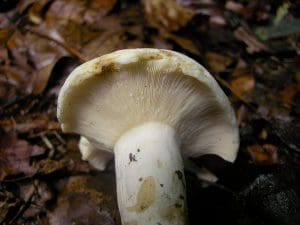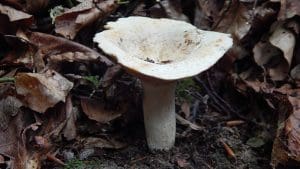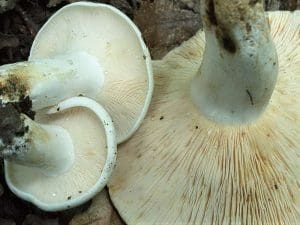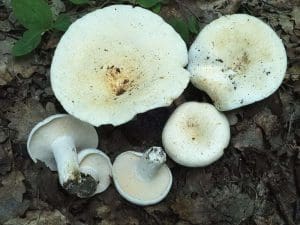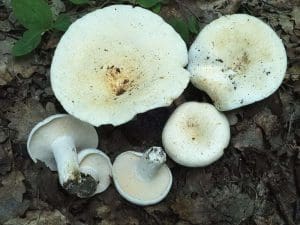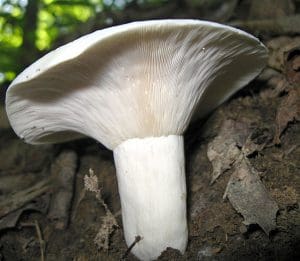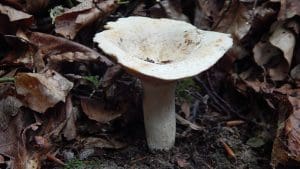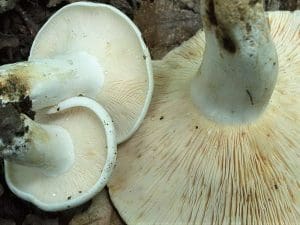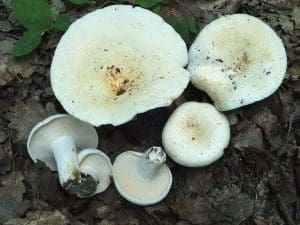Peppery Milkcap/ Summer / Autumn / Edible but not recommended
Through this guide we’re going to be taking a deep dive into the peppery milkcap to discover the keys to safely identify it.
Scientific Name
Lactarius piperatus/Lactifluus piperatus
Family
Russulaceae
Habitat
Deciduous woods, frequently with Ash on rich soils.
Description
The Peppery Milkcap (Lactarius piperatus) has a cap 6-16cm across which is convex with a concave to widely funnel-shaped centre. The cap is creamy-white, matt and glabrous (hairless). The surface of the cap may become cracked in dry conditions. The stem or stipe (30-70 x 20-40mm) is white, thick and cylindrical, sometimes tapering towards the base. The gills are decurrent, crowded and narrow and the same colour as the stem but becoming creamy with age. The latex produced from cut or torn gills is white.
Identifying Features for the Peppery Milkcap:
Cap:
White or cream, matt, smooth, sometimes wrinkled or cracked. Convex then flattened with a central depression, sometimes funnel-shaped
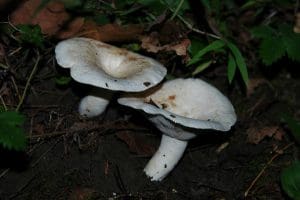
Stem:
Same colour as cap. Stout and cylindrical, sometimes tapering towards base, becoming hollow.
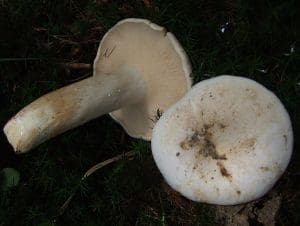
Gills:
White, becoming cream. Very crowded, thin, forked, decurrent.
The milk is white.

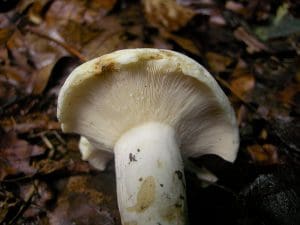
Smell:
Slightly fruity
Spores:
Pale Cream/white
Uses
Edibility of The Peppery Milkcap
Has an unpleasant taste, being uncomfortably hot and difficult to digest when eaten raw. It is used as a seasoning when dried and sometimes eaten fresh after parboiling, though the taste is still unappetising. The milk has a very hot and acrid taste but this is removed by boiling.
In Finland cooks boil it repeatedly (disposing of the water each time) and then store it in salt water and refrigerate it, then pickle it or serve it in salads.
Harvesting
Found July to October in deciduous woodland.
Known hazards
Sometimes causes an irritant reaction on the lips and tongue which subsides after an hour.
Potential lookalikes
Almost identical is L. glaucescens which is distinguished by the milk turning slowly from white to olive then green on exposure.
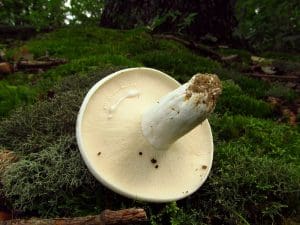
The taste of this is also extremely acrid.
Another similar species of the large white milkcaps is the Fleecy Milkcap (L. vellereus)
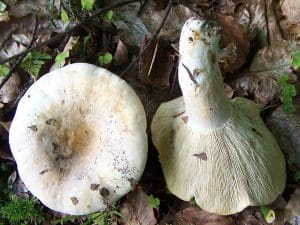
which has a larger, velvety cap, shorter stem and more distant gills. This is of similar edibility to the Peppery Milkcap.
The Blushing Milkcap (L controversus) is similar but has pink/purple blotches.
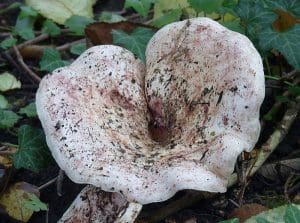
If you don’t notice the milk, some of the larger members of the Tricholomataceae (Knight family) might be mistaken for this species.
Other uses of the Peppery Milkcap
Peppery Milkcap forms part of an unusual and highly regarded dish in North America, being one of several species parasitised by the lobster mushroom Hypomyces lactifluorum. Once colonised by the parasite, an orange-red crust forms over the surface of the mushroom and the taste becomes delicious as the parasite infiltrates its host’s tissues.
Because of the presence of auxins (a class of plant hormones essential for plant body development) in Peppery Milkcap metabolites, it can be applied as a rooting hormone to aid the growth of seedlings in plants such as hazel, beech and oak.
In recent times it has been found that Peppery Milkcap can be used as an antiviral agent and the latex has been used against viral warts.
Also a common source of food for red squirrels.



